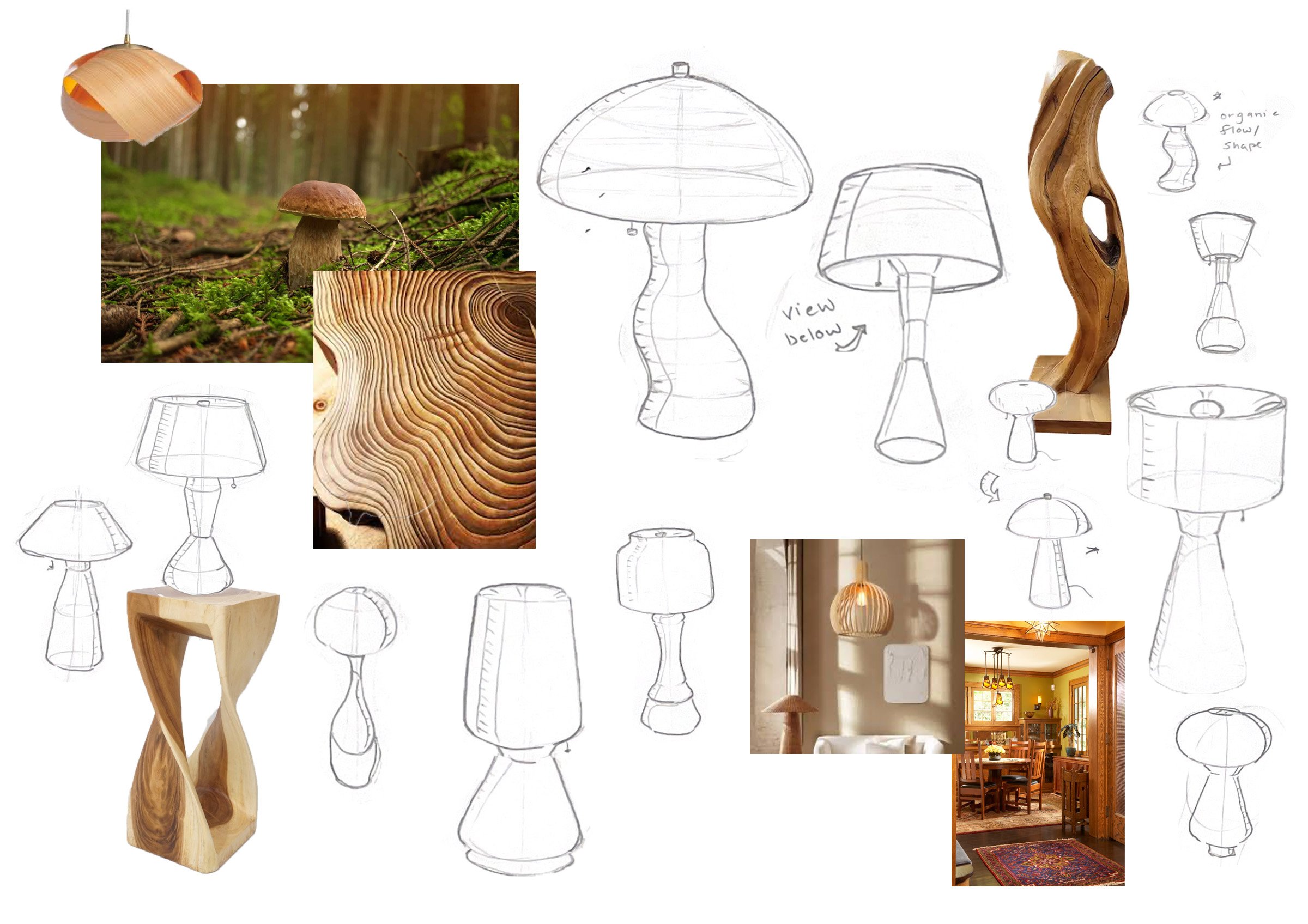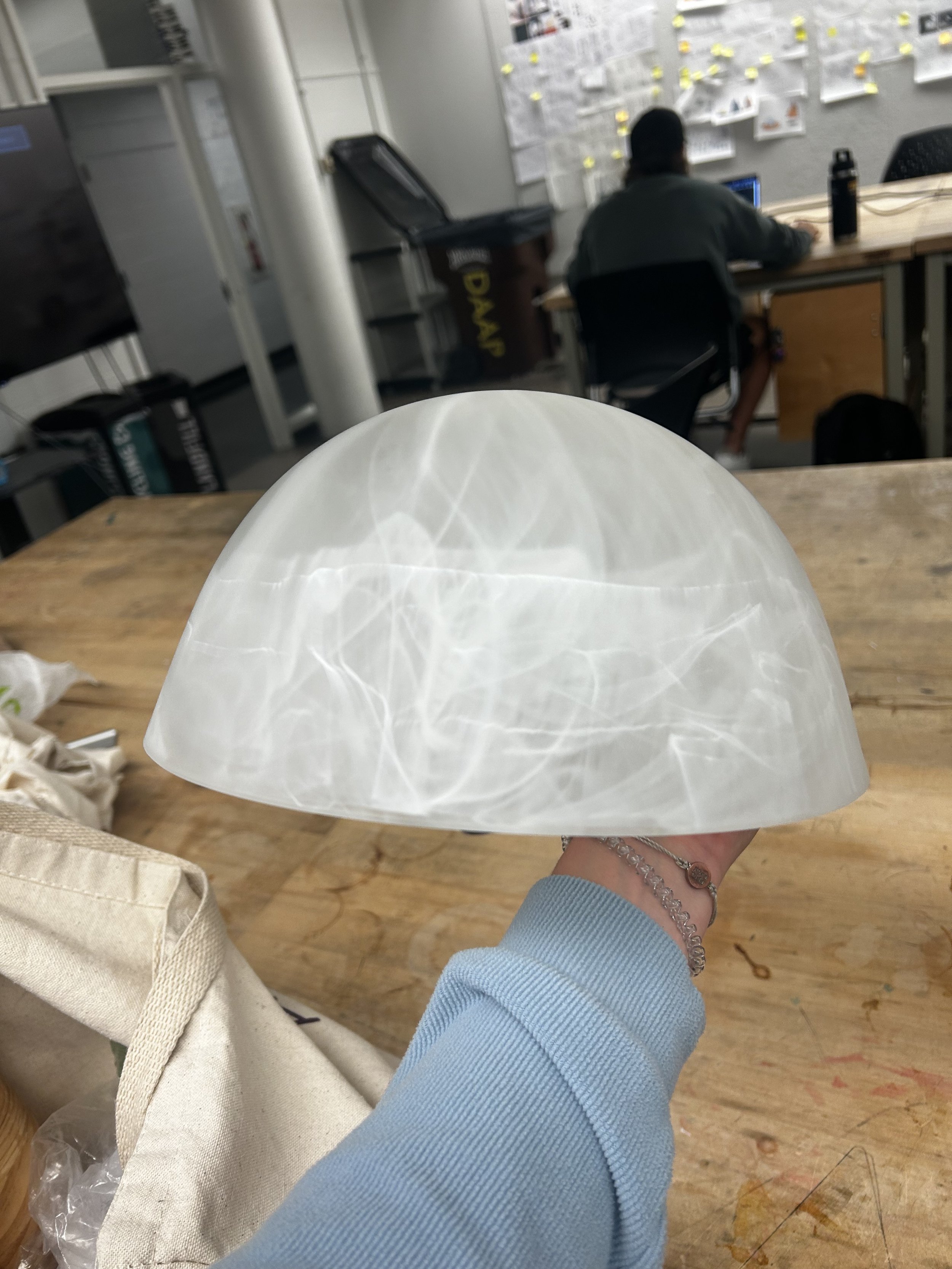
Personal Project | Summer 2023
Skills Developed: Research, Woodworking, Wiring, Machine Sanding, Photography
The Helga Lamp
There is large dialogue in modern discussions about the impact of fast fashion, however while clothes pile up in landfills, most people are not aware that there is also a massive home-goods waste issue in America. This problem referred to as “fast furniture” has created12.2 million tons of a waste impression on the United States waste collection. This has contributed to 450% increase in solid waste since 1960. Thrifting clothes has grown extremely popular since the wake of protests against fast fashion. I want to know what else I can derive and create from the sustainable recycling resources thrift stores provide.
Lets Begin.
I was fortunate to travel this summer, during these travels I visited a range of places from local markets, to thrift stores, to antique shops. Wanting to know what could be recycled into something new. Finding inspiration in lamps, studying different lamps, decorations, and furniture to investigate form, shape, color, and use of light. During these visits finding a lamp shade to thrift and leftover pine from a friend’s old wood shop, meaning the project remained sustainable and low price.
Inspo.
Research prompted inspiration on the final form. Looking to create an inviting and playful piece out of natural materials and organic forms to match the “mushroom” shape of the thrifted lampshade.
organic
playful
natural
inviting
Ideation.
Transition from inspiration into sketching of final product solutions.
Process.
Began with using the miter saw to measure out proportional sections for building.
Then using the band saw to cut out the circle shapes, followed by using the table sanders to finish out the shape.
Sizing for the height ratio to the cord length and lamp shade size.
Began the sanding process using an oscillating spindle sander, and finished it out with hand sanding, starting with 100 grit and working up to 700 grit paper.
Once fully sanded, the next step was staining the piece, deciding to go with the color of Ipswich Pine to fit an inviting and homey atmosphere.
After letting the stain dry, the wiring and construction of the inner part of the lamp were screwed and assembled into place.
Placed and glued to sit in a clamp for 24 hours before continuing with sanding. The drill press was then used to create a hole for the wiring.
Finally, using the shade I thrifted during my search for inspiration, the final light bulb was placed and the shade was screwed in to complete the finished product.






















